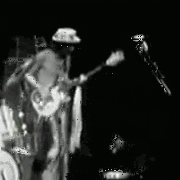|
I went to a high school that's on a street named after my great-great-grandfather.
|
|
|
|

|
| # ? May 26, 2024 16:39 |
|
Where can I find the Fartmonger street?
|
|
|
|
ComradeCosmobot posted:Mannheim uses a system more like Japan, yes. The blocks are named, not the streets. No, the streets weren't sane names before. There were tiny blips of villages and towns that were built in the former farmlands, which often reused all the same old Main, Maple, Elm, whatever names multiple times within the borough, and then there were vast empty spaces between those already built up areas with no streets, and thus no names except for the few between-town roads (which mostly keep their old names and routes today). The decision to switch to numbered street grids for developing the empty land and redeveloping over the existing villages was done to eliminate as many exact same street addresses/names as possible. This was very important in a time before postal codes, to ensure you could get the right address without trying to remember what no-longer-existing village or town was closest by to the target address. The All 60th area of Maspeth is funny, but it's also the only place you see that level of use crop up, for whatever reason most places along the diagonal line for the intersecting east-west and north-south grid numbers don't end up needing all the extra roads allowed in the scheme, so you only have say 49th Ave and 49th Street intersect without a matching Road, Drive, Terrace, Place or Lane. Keep in mind that when they were doing this, they were adding in like literally over 50,000 news roads to the empty areas, and overlaying/connecting a few thousand existing ones. Nobody has time to come up with all the names you'd otherwise need, even if you were to only name one direction in the grid! To get a sense of the scale of the project at hand, when they started considering how to smooth out all the issues with existing streets in Queens and how to handle the newly planned ones, 284,041 people lived in the 108 square miles of the borough. By 1920 when they got close to finalizing it, it'd already jumped to 469,042, and by 1940 when all the renaming was done it'd gone to 1,297,634. Today, there's 2,339,150 people there. That's how much new development and redevelopment the naming plan had to account for. fishmech fucked around with this message at 01:59 on Dec 4, 2016 |
|
|
|
Of course the correct answer is that European streets aren't fifteen lane highways so people can actually navigate using landmarks, whereas American streets are so wide you can have hardly see any of the buildings so you need to navigate by reading the street name signs hanging from their traffic lights. You'll come across those traffic lights every thirty seconds because, although the US is a country in love with driving, they also seem to be in love with stopping all the time. But that's another argument for another day. I've met plenty of Americans in the U.K. who simply don't know how to navigate because they can never see the signs telling them what street they're on, but people here simply don't use street names. It's just different ways of navigation.
|
|
|
|
Where I live, even numbered streets start at the courthouse and go north. Odd-numbered streets are south of the courthouse. Except that there is no 1st Street and 5th runs into 7th. In the old part of town, streets running north and south all have a lane beside them with the same name. Wilson Street is right next to Wilson Lane. And the city will never fully rename a street. If they want to honor someone, they just add the person's name to the street name. So now Goff Street has several signs where it's also marked as [noted local doctor's name] Way. They've done that a lot in recent years.
|
|
|
|
duckmaster posted:Of course the correct answer is that European streets aren't fifteen lane highways so people can actually navigate using landmarks, whereas American streets are so wide... No. Most of them aren't very wide at all. They're wider than 0.2 mile long oxen paths laid out in 1265 sure but there's usually only 2 or 3 lanes of travel on the majority of 'em, often less.
|
|
|
|
There are lots of cities where cardinal directions can happen.
|
|
|
|
steinrokkan posted:People orient themselves by landmarks and nodes, not by cardinal directions. This is true, and there's plenty of experimental evidence for this from cognitive psychology. For example, if you put people in a non-Euclidean virtual environment (e.g. one that wraps around like pac-man) they learn their way around just as well as in a Euclidean environment and invariably remain unaware of the "wormholes". If cardinal directions or metric distances were important for navigation then you would expect some differences to occur. There are other results in this vein too. If you distort the environment in between learning and test, then changes to landmarks and topology of the network (e.g. removing an intersection) are much more detrimental than changes to distances and angles between things. This is without technological assistance, of course, so with phones/GPS behavior would be different. Although there was one version of the experiment where a sun was visible with directional shadows but people didn't use that information.
|
|
|
|
It's nice and all that when you're building a maze people don't actually live in, they don't use the cardinal directions, but that has absolutely nothing to do with real built and lived in environments that have design based on following the cardinal directions (more or less, usually rotated a bit from true north/south/east/west). Unless what they were really trying to test if humans have a magnetic sense the way some birds supposedly do, that would make them able to "feel" the cardinal directions? I mean what those directions were was assigned rather arbritrarily. The directionality becomes its own form of landmarking, as do intentionally designed areas where the normal system is broken up - say by large public squares/parks in many of the older cardinal grid American cities. Which themselves often have large monuments down the street sightlines for easy recognizability.
|
|
|
|
You're right, obviously they weren't testing whether people use cardinal directions specifically but whether they use directions (angles) and distances at all. You're also right that the extent that people do use them is with the aid of cultural/technological scaffolding and still relies heavily on landmarks.
|
|
|
|
Powered Descent posted:I've heard that Japan sometimes reverses the figure-ground distinction, so to speak. Here in the west, the streets are named, and the blocks are just kind of the spaces between the streets. But in Japan, the blocks are sometimes what's named, and the streets are just the spaces around them. Is there any truth to that? Not only that, but the buildings are numbered in the order they are built. I've heard that if you tear down a house and build a new one on the same lot, it gets a new number. The inconvenience was intentional, of course: making neighborhoods illegible to outsiders served a useful security purpose. Pre-GPS, to find a place in a given block, you'd have to conspicuously wander around, possibly paying a visit to a police kiosk.
|
|
|
|
mobby_6kl posted:Check this out: Ghost of Mussolini posted:
Also landmark navigation doesn't work so well when you're not very familiar with the area.
|
|
|
|
Maxwells Demon posted:Isn't there some part of Atlanta where 1/2 of the streets have Peach in the name? Can't find the map of it right now. there are 71 streets in atlanta with some variance of peachtree but they're mostly dinky office park or subdivision roads nobody cares about. aside from atlanta's main street, peachtree street, and its sisters west peachtree street and peachtree center ave downtown, as well as the various names of peachtree as it heads north (peachtree st > peachtree road > peachtree industrial boulevard or PIB) this is mainly something non-locals yuk about. same as calling it "atlanta" instead of "alanna". only people from outside the line prounounce a t in atlanta the bigger reason atlanta is non-navigable is that its central grid is oriented diagonally, nested inside of a sort of half-assed cardinal grid, and then the rest is just spaghetti. and the fact that road names change suddenly, both because of legacy segregation reasons as well as the fact that the city council loves honoring people by changing street names - you can tell real atlanta old timers by people who still refer to techwood instead of centennial olympic park drive. also atlanta used to have a nathan bedford forrest boulevard, but he was a fucker, so it was dropped, but they never renamed the street to anything else. so it's just boulevard. not boulevard boulevard, simply "boulevard". also in the south a lot of roads are referred to by "origin-destination road" as in the road you take to get from here to there. so the road between chamblee and dunwoody is "chamblee-dunwoody road". most atlantans know buford highway as a distinct corridor where immigrants open a ton of ethnic restaurants, not just the road you take to get to buford. since sometimes you're leaving peachtree, you might end up with "peachtree-dunwoody road" etc. boner confessor fucked around with this message at 07:22 on Dec 4, 2016 |
|
|
|
fishmech posted:Keep in mind that when they were doing this, they were adding in like literally over 50,000 news roads to the empty areas, and overlaying/connecting a few thousand existing ones. Nobody has time to come up with all the names you'd otherwise need, even if you were to only name one direction in the grid! To get a sense of the scale of the project at hand, when they started considering how to smooth out all the issues with existing streets in Queens and how to handle the newly planned ones, 284,041 people lived in the 108 square miles of the borough. By 1920 when they got close to finalizing it, it'd already jumped to 469,042, and by 1940 when all the renaming was done it'd gone to 1,297,634. Today, there's 2,339,150 people there. That's how much new development and redevelopment the naming plan had to account for. Queens's growth was not unique. Detroit grew more than that from 1900 to 1920 and somehow managed to only number streets along one axis in only one part of the city. San Francisco grew about that much and ended up only numbering along two axes that never intersected, using a modified alphabetic naming for the cross-axis out in the Sunset District that used real words instead of just letters. LA grew even more and only used numbers along one axis (except for a small region near Inglewood). You are correct that the infill between the lesser cities did probably necessitate some renaming. But there was nothing that inherently required a two-axis numeric system, let alone a system at all, so long as they knew what duplicates existed and addressed those specifically. Humans are really good at coming up with names, especially from historical persons, as can be seen in Brazil, Guiana and in other places (never mind in many of the cities I just mentioned. The choice that Queens made was a "rational" one based on the dominating, modernist/mechanical mindset of the era, but that doesn't make it an actually human-friendly one. There's nothing inherent to it that would have prevented Queens from going any number of ways with their naming. ComradeCosmobot fucked around with this message at 08:38 on Dec 4, 2016 |
|
|
|
mobby_6kl posted:Plus you get to show off how woke you are by bringing up some historical atrocity committed by those people in casual conversation. The number two function of statues. The number one being pigeon toilet.
|
|
|
|
Orange Devil posted:The number two function of statues. The number one being pigeon toilet. Robert E. Loo
|
|
|
|
Manneken Pis is actually highly problematic because it sexualises little children, puts the cismale gender (in both meanings of the word) at the centre of attention (the fact that a female version of the statue was erected in the 80s changes nothing in this regard but to create new problems) and kinkshames those who like to incorporate urine into their sex life. I'm literally shaking every time I'm going past the statue which is never because I don't live in Brussels.
|
|
|
|
My neighbourhood is full of weird modern art such as a pile of logs, a bunch of rocks and a weird horsey looking thing made of iron bars, and all the streets are named after pottery designers
|
|
|
|
What's up with local cityfolks not pronouncing their Ts? Toronto? Atlanta? They don't even sound good without the Ts
|
|
|
|
 This is a WHO map of air pollution. Is the patch in Alaska from oil extraction? I can't think of any other reason.
|
|
|
|
What on earth is making so much pollution in the Sahara?
|
|
|
|
Byzantine posted:What on earth is making so much pollution in the Sahara?
|
|
|
|
Byzantine posted:What on earth is making so much pollution in the Sahara? Sandstorms. It's a measure of particles in the air, not necessarily manmade pollutants.
|
|
|
|
Byzantine posted:What on earth is making so much pollution in the Sahara? Probably dust, it almost seem more like an air quality map than pollution.
|
|
|
|
steinrokkan posted:People orient themselves by landmarks and nodes, not by cardinal directions. I was so angry when I found out Western and Eastern Long Street were actually a lot more Northern and Southern. Why would you do that?
|
|
|
|
Plinkey posted:Probably dust, it almost seem more like an air quality map than pollution. That's just semantics.
|
|
|
|
I'm the tiny blip of radioactive dust in Siberia.
|
|
|
|
Arglebargle III posted:I'm the tiny blip of radioactive dust in Siberia. More likely fires from oil fields or something in that vein.
|
|
|
|
Badger of Basra posted:
Oh hey look, a map with the borders of independent Tibet
|
|
|
|
Vegetable posted:What's up with local cityfolks not pronouncing their Ts? Toronto? Atlanta? They don't even sound good without the Ts If you say a word a lot, stopping dead in the middle for a hard T gets old.
|
|
|
|
The blip of red in Serbia is mostly caused by Belgrade, but I'm pretty sure Deliblato Sands are also partially a culprit. Pretty much the only remainder of a giant prehistoric desert. A shitton of rare species lives there. Apparently it used to cause really nasty dust storms, but they were stopped by a couple of well placed manmade forests.
|
|
|
|
ComradeCosmobot posted:Queens's growth was not unique. Detroit grew more than that from 1900 to 1920 and somehow managed to only number streets along one axis in only one part of the city. San Francisco grew about that much and ended up only numbering along two axes that never intersected, using a modified alphabetic naming for the cross-axis out in the Sunset District that used real words instead of just letters. LA grew even more and only used numbers along one axis (except for a small region near Inglewood). First off, I wouldn't use Detroit as an example of successful city design. And San Francisco didn't grow that much either, both in raw land area and number of streets as well as population. And Los Angeles took a lot longer to grow, and further had a lot of the growth happen outside of incorporated districts. Los Angeles and Detroit also generally have a coarser grid structure meaning less streets per unit area in need of naming, which helps a great deal. The two axis grid system was already used in most of the territory of the 3 other major boroughs, so why wouldn't they keep using the same sort of thing that worked in most of Manhattan, most of the Bronx, most of Brooklyn? Plus deciding who could keep their duplicates and who couldn't was a very contentious issue, which is why it was decided to simply eliminate the original names as much as possible. It wasn't based on the era though? It was based on merely extending the early 19th century Commissioner's plan used for Manhattan development and which was later brought up into the Bronx. If anything it was rather archaic as opposed to "modern mechanical" innovation. And it's just as human friendly as coming up with 50,000 random names. You don't see people bitching about how inhuman it is to live on 56th street in Manhattan...
|
|
|
|
fishmech posted:It wasn't based on the era though? It was based on merely extending the early 19th century Commissioner's plan used for Manhattan development and which was later brought up into the Bronx. If anything it was rather archaic as opposed to "modern mechanical" innovation. And it's just as human friendly as coming up with 50,000 random names. You don't see people bitching about how inhuman it is to live on 56th street in Manhattan...
|
|
|
|
fishmech posted:First off, I wouldn't use Detroit as an example of successful city design. Why's that, out of interest?
|
|
|
|
ulmont posted:If you say a word a lot, stopping dead in the middle for a hard T gets old. Balmore too
|
|
|
|
Osama Dozen-Dongs posted:Why's that, out of interest? Uh, the fact that the city utterly collapsed and is largely abandoned? And that it wasn't too great even at its height, due to the city design kinda combining some of the worst aspects of city and suburb design? Today, Detroit's population is 37% of the population it had at it's peak in 1950 - it went from 1,849,568 to 677,116
|
|
|
|
fishmech posted:Uh, the fact that the city utterly collapsed and is largely abandoned? And that it wasn't too great even at its height, due to the city design kinda combining some of the worst aspects of city and suburb design? All you really need to see what Detroit's biggest problem is is to look at, say, the northwest corner of the city.
|
|
|
|
fishmech posted:Uh, the fact that the city utterly collapsed and is largely abandoned? And that it wasn't too great even at its height, due to the city design kinda combining some of the worst aspects of city and suburb design?
|
|
|
|
Ofaloaf posted:I'm not convinced that Detroit's road layout is the big cause of its decline. It was a boom town, but for a manufacturing industry instead of gold mining. If the city's roads had been laid out according to a different system, if a bigger portion of the streetcar system had remained intact (there was a halfhearted attempt at getting a service going again in the '70s, after the original service closed in the '50s), Detroit still would have had a severe bout of rust belt decline, because it was the collapse of the auto industry that led to the city's terminal collapse, not the city's design. It was not the cause of its decline, per se, but it made things considerably worse. When the population started dropping, the population in some neighborhoods became extremely sparse, but the city had to pay the same infrastructure costs to maintain those neighborhoods despite the lack of taxpayers. And it wasn't just residences that were really spread out, it was jobs – so a lot of businesses closed because there weren't enough potential customers or employees nearby. This is why large portions of Detroit are almost completely empty, and the city hasn't been able to bounce back the way many other cities have – see, e.g., Pittsburgh
|
|
|
|

|
| # ? May 26, 2024 16:39 |
|
Ofaloaf posted:I'm not convinced that Detroit's road layout is the big cause of its decline. It was a boom town, but for a manufacturing industry instead of gold mining I'm not just talking about the road design, though the road design definitely didn't help. Just the whole way things were planned work adequate at best in good times, but become quite a bit of a boondoggle in bad times i.e. the entire past 60 years. And the results of that breakdown drove ever more people who would otherwise stick it out in their homes to consider moving out to the proper suburbs. It's a self-reinforcing cycle. And as for the streetcar services:  This was the state of the streetcar lines in 1941, which was pretty much the peak point and about the same as it'd been since the late 20s. You'll notice large chunks of the city lack service outside of one or two lines heading to the downtown core, and many others only have minimal service. These areas that lack streetcar service in 1941 at about the height of the city's life were also developed with the worst street grid stuff, and are among the worst off areas today. Meanwhile the areas with really great streetcar service back then are generally older, with a better road design and general layout, and even today are doing a lot better. Also worth consulting: a map of the population density of different areas of the city, based on 2010 census results: 
|
|
|









































